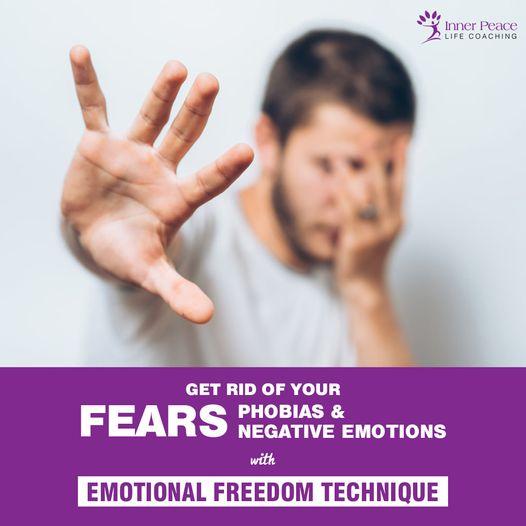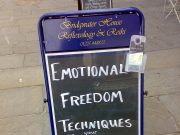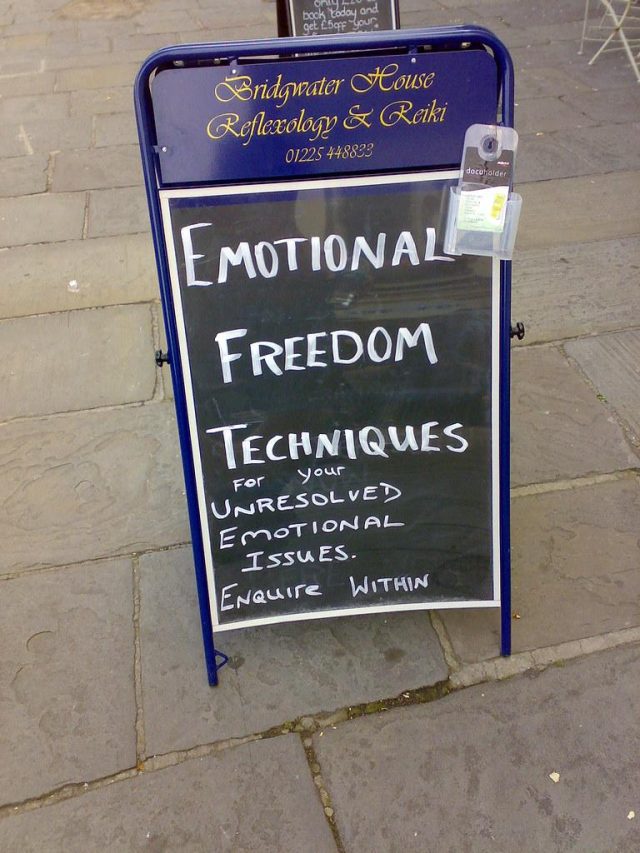In the fast-paced world we live in today, stress and emotional turbulence have become almost unavoidable companions. Many of us find ourselves seeking effective ways to manage these emotional challenges and regain a sense of inner peace. Enter Emotional Freedom Technique (EFT), a powerful tool designed to help individuals release emotional blockages and achieve a state of balance and well-being. Often referred to as “tapping,” EFT combines elements of traditional Chinese acupressure with modern psychology, offering a unique approach to emotional healing. In this article, we will explore essential tips for practicing EFT, guiding you through the process with empathy and understanding. Whether you are new to EFT or looking to deepen your practice, these insights will help you harness the full potential of this transformative technique, empowering you to navigate life’s emotional landscape with greater ease and resilience.
Understanding the Basics of Emotional Freedom Technique
The Emotional Freedom Technique (EFT), often referred to as “tapping,” is a simple yet profound practice that involves tapping on specific meridian points on the body while focusing on negative emotions or physical sensations. This technique aims to balance the body’s energy system and alleviate emotional distress. To get started, it’s essential to understand the basic components of EFT:
- Setup Statement: Begin by identifying the issue you want to address. Create a setup statement that acknowledges the problem and affirms self-acceptance, such as “Even though I feel anxious, I deeply and completely accept myself.”
- Meridian Points: Tap gently on a series of meridian points, typically starting from the side of the hand (karate chop point) and moving through points on the head and upper body. Each point is tapped several times while repeating a reminder phrase.
- Reminder Phrase: A brief phrase that encapsulates the issue, such as “this anxiety,” is repeated as you tap through the points.
For a deeper understanding, refer to the table below which outlines some common meridian points and their corresponding locations:
| Meridian Point | Location |
|---|---|
| Karate Chop | Side of the hand |
| Eyebrow | Beginning of the brow, near the nose |
| Under Eye | Directly below the pupil |
| Collarbone | Just below the collarbone |

Creating a Safe and Comfortable Environment for Practice
- Choose a Quiet Space: Select a location free from distractions and noise. A serene environment allows you to focus inward and connect deeply with your emotions. Consider dimming the lights or using soft lighting to enhance relaxation.
- Personalize Your Space: Incorporate elements that bring you peace and comfort, such as cozy cushions, a favorite blanket, or calming scents like lavender or chamomile. This personalization can make your practice more inviting and soothing.
- Set Intentional Boundaries: Inform others in your household about your practice time to minimize interruptions. This not only respects your need for privacy but also creates a sense of ritual and commitment to your emotional well-being.
Consider incorporating a routine before starting your session to signal to your mind and body that it’s time to focus. This could be a few minutes of deep breathing, listening to calming music, or even a gentle stretch. Such routines can help transition from the busyness of the day to a state of calm and readiness.
| Element | Purpose |
|---|---|
| Soft Lighting | Enhances relaxation and focus |
| Calming Scents | Promotes tranquility and emotional openness |
| Personal Items | Creates a sense of safety and familiarity |
Remember, the environment you create is an extension of your inner world. By consciously curating your space, you foster a setting that supports emotional exploration and healing. This thoughtful preparation can significantly enhance the effectiveness of your emotional freedom technique practice.

Developing a Consistent Routine for Lasting Benefits
Creating a reliable routine is essential for experiencing the full benefits of Emotional Freedom Technique (EFT). By embedding EFT into your daily life, you not only enhance your emotional resilience but also ensure long-term mental well-being. Here are some steps to help you maintain consistency:
- Set a Specific Time: Choose a time of day that naturally fits into your schedule. Whether it’s first thing in the morning or before bed, committing to a specific time helps reinforce the habit.
- Start Small: Begin with a manageable duration, such as 5-10 minutes. Gradually increase the time as you become more comfortable with the practice.
- Use Reminders: Set daily reminders on your phone or use sticky notes to prompt you to practice. Consistent cues help in building a habitual practice.
For those who enjoy tracking progress, consider using a simple table to log your sessions. This can provide a visual reminder of your commitment and growth:
| Date | Duration (minutes) | Focus Area |
|---|---|---|
| 01/11/2023 | 10 | Anxiety Relief |
| 02/11/2023 | 15 | Stress Reduction |
Remember, the goal is to cultivate a routine that feels natural and supportive, not burdensome. By taking small, consistent steps, you are investing in your emotional health and laying the foundation for lasting benefits.

Addressing Emotional Blocks with Compassion and Patience
In the journey of practicing emotional freedom techniques, it’s essential to recognize and address emotional blocks with a gentle approach. When you encounter resistance, consider employing strategies that emphasize compassion and patience. Here are a few suggestions to help you navigate these challenges:
- Practice Self-Compassion: Understand that emotional blocks are a natural part of the healing process. Speak to yourself as you would a friend, using kind and understanding language.
- Give Yourself Time: Healing doesn’t happen overnight. Allow yourself the space and time needed to process emotions without rushing the experience.
- Stay Present: Focus on the present moment rather than dwelling on past failures or future anxieties. This mindfulness can help ease emotional tension.
| Strategy | Benefit |
|---|---|
| Breathing Exercises | Reduces stress and promotes calmness |
| Mindful Journaling | Increases self-awareness and emotional clarity |
| Gentle Movement | Encourages emotional release and relaxation |
Remember, each emotional block presents an opportunity for growth and deeper understanding. Approach them with a mindset of curiosity and empathy, allowing your emotional freedom technique practice to become a nurturing journey.








































